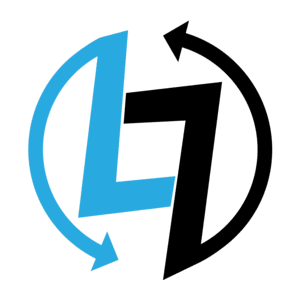Hey there, fellow internet explorer! Have you ever thought about how the internet has changed over the years? From those early, static web pages to the dynamic social platforms we use today, it’s been quite a journey, hasn’t it? Well, get ready, because we’re on the cusp of another massive transformation – something we call Web3.
Now, you might be hearing this term “Web3” a lot lately, and perhaps it sounds a bit technical or even a little confusing. Don’t worry, you’re not alone! Many people are curious about what it truly means. In this article, we’re going to break down Web3 into simple, digestible pieces.
Think of it as your friendly guide to understanding the internet’s exciting new chapter.
What is Web3? The Big Picture
At its core, Web3 is often described as the “decentralized internet.” To really get what that means, let’s take a quick trip down memory lane.
You see, the internet, as we know it today (often called Web 2.0), is largely controlled by big companies. Think about it: platforms like Facebook, Google, and Amazon hold a huge amount of your data and control how you interact online.
They’re like central hubs where everything happens. While Web 2.0 brought us amazing things like social media and online shopping, it also came with concerns about data privacy, censorship, and who truly owns your digital identity.
Web3, on the other hand, aims to shift power from these big corporations back to the individual users. Imagine an internet where you have more control over your data, your online identity, and even how applications are built and run. That’s the vision of Web3.
It’s built on groundbreaking technologies like blockchain, which, as you may know, is the same tech behind cryptocurrencies.
Web3 Meaning: Beyond the Buzzword
So, what does “Web3 meaning” truly encompass? It’s about a few key ideas –
Decentralization
Instead of data and applications living on central servers owned by companies, Web3 uses a network of computers around the world. This means there’s no single point of control, making it more resilient to censorship and giving users more say.
User Ownership
In Web3, you can genuinely own your digital assets, whether it’s your data, virtual items in games, or even parts of online communities. This is a huge shift from Web 2.0, where you often just “rent” space on platforms.
Trustlessness
This might sound a bit odd, but in Web3, you don’t necessarily need to trust a central authority for transactions or interactions. The technology itself (like blockchain) ensures transparency and integrity.
Permissionless
Anyone can participate in Web3 without needing approval from a central entity. This fosters innovation and makes the internet more open and accessible to everyone.
What is Web3 Technology? The Engine Under the Hood
When we talk about Web3 technology, we’re primarily referring to a combination of several innovative advancements. The most prominent one, as we mentioned, is blockchain technology.
For your information, blockchain is essentially a distributed ledger, a fancy term for a shared, unchangeable record of transactions. Imagine a digital notebook where every page is linked to the previous one, and once something is written, it can’t be erased or changed. This makes it incredibly secure and transparent.
Beyond blockchain, Web3 also leverages –
Cryptocurrency
Digital currencies like Bitcoin and Ethereum are integral to Web3, enabling secure transactions and often acting as incentives within decentralized networks.
Non-Fungible Tokens (NFTs)
These are unique digital assets that represent ownership of something, whether it’s art, music, or even virtual land. They’re a key part of how “digital ownership” works in Web3.
Smart Contracts
Think of these as self-executing agreements written directly into code on a blockchain. They automatically carry out actions when certain conditions are met, without the need for an intermediary.
Decentralized Applications (dApps)
These are applications that run on a decentralized network, often using smart contracts. Unlike traditional apps, no single company controls them.
What is Web3 Development? Building the Future
If you’re wondering, “What is Web3 development?” it’s simply the process of creating these decentralized applications and protocols. It involves a different mindset and skillset compared to traditional web development.
Developers learn to work with blockchain networks, write smart contracts (often using languages like Solidity for Ethereum), and design user interfaces that interact with these decentralized backends.
Since this is a growing field, many individuals and companies are specializing in this area. This leads us to the concept of a Web3 Development Company.
These are businesses that offer expertise in building, deploying, and maintaining Web3 solutions, from decentralized finance (DeFi) platforms to NFT marketplaces and blockchain-powered games. They’re essentially the architects and builders of the new internet.
What are the Benefits of Web3? Why Should You Care?
Now, let’s talk about the exciting part: What are the benefits of Web3? Why is everyone so hyped about it?
Increased User Control and Data Privacy
This is a big one! With Web3, you have more say over your personal data. Instead of companies owning and potentially monetizing your information, you can decide who accesses it and how it’s used. This means a significant step towards enhanced privacy.
Greater Security
Because data is distributed across a network and secured with cryptography, Web3 applications can be more resistant to hacks and single points of failure.
Censorship Resistance
Since there’s no central authority to pull the plug, Web3 applications and content are less susceptible to censorship or arbitrary removal.
New Economic Models
Web3 opens up innovative ways for creators and users to earn money. Think “play-to-earn” games, where you can earn real value for your in-game achievements, or direct monetization of your content without intermediaries.
Interoperability
The vision is for different Web3 applications and platforms to work together seamlessly, allowing your digital assets and identity to move freely across the internet.
What is Web3 Blockchain? The Foundation
As you know, blockchain is the foundational technology for Web3. So, what is Web3 blockchain really all about? It’s the underlying infrastructure that provides the decentralization, transparency, and security that Web3 thrives on.
Every transaction, every piece of data, and every smart contract on Web3 is recorded and secured on a blockchain.
When it comes to which is the best blockchain infrastructure for Web3 projects, there isn’t a single “best” answer, as it really depends on the project’s specific needs. However, some prominent blockchains for Web3 development include –
Ethereum
This is currently the most popular blockchain for dApps and smart contracts, with a large developer community.
Solana
Known for its high transaction speeds and lower fees, making it attractive for certain applications, especially games.
Polygon
An Ethereum scaling solution that helps dApps run faster and cheaper on Ethereum.
Binance Smart Chain (BSC)
Another popular choice offering a balance of speed and affordability.
Each has its own strengths and weaknesses in terms of scalability, security, and developer tools, so the “best” choice is truly project-dependent.
What is a Web3 Wallet? Your Digital Passport
If you want to interact with Web3, you’ll need a Web3 wallet. But don’t confuse it with your physical wallet that holds cash! A Web3 wallet is a digital tool that allows you to –
- Store your cryptocurrencies and NFTs.
- Manage your digital identity.
- Interact securely with decentralized applications (dApps).
Think of it as your digital passport and bank account for the decentralized internet. It’s how you prove who you are and access your digital assets in the Web3 space.
What is Web3 in Crypto? The Intertwined Relationship
You might be wondering, “What is Web3 in crypto?” Well, as you’ve probably gathered, crypto and Web3 are deeply intertwined. Cryptocurrencies are often the native currency of Web3 networks, used for transactions, paying for services (like “gas fees” on Ethereum), and even for governance in some decentralized projects.
Furthermore, NFTs, which are a form of crypto asset, are central to the concept of digital ownership in Web3, as we discussed earlier. So, in essence, crypto provides the economic backbone and the ownership mechanisms for the Web3 ecosystem.
Web3 Games and Web3 Gaming: A New Era for Players
Now, let’s talk about something truly exciting for many: Web3 games and Web3 gaming! This is where blockchain technology is revolutionizing the way we play.
In traditional games, as you know, you might spend hours earning in-game currency or collecting rare items, but you don’t truly “own” them. If the game shuts down, or if the developers decide to change things, your hard-earned assets could disappear.
However, Web3 games change this by integrating blockchain. This means –
True Ownership of In-Game Assets
Items, characters, and even virtual land in Web3 games are often represented as NFTs. This means you genuinely own them, and you can trade, sell, or even transfer them outside of the game itself.
Play-to-Earn (P2E) Models
Many Web3 games allow players to earn cryptocurrencies or NFTs through gameplay, which can then be sold for real-world value. This creates entirely new economic opportunities for gamers.
Player Governance
In some Web3 games, players can have a say in the game’s development and future through Decentralized Autonomous Organizations (DAOs), where token holders vote on key decisions.
One example that some might be familiar with is the concept of a “Web3 Castle Age.” While not a specific game, it embodies the idea of strategy games where players can truly own their castles, resources, and even armies as digital assets, trading them, enhancing them, and participating in a player-driven economy.
What are Web3 Domains? Your Decentralized Address
You know how you type “https://www.google.com/search?q=google.com” or “https://www.google.com/search?q=yourwebsite.com” to access a website? Those are traditional domain names. Now, imagine something similar but built on blockchain: Web3 domains.
Instead of being managed by a centralized entity like ICANN (Internet Corporation for Assigned Names and Numbers), Web3 domains are owned and controlled by you as NFTs. This means –
Simplified Crypto Addresses
Instead of sharing a long, complex cryptocurrency wallet address, you could give someone your Web3 domain name (e.g., “yourname.eth”), which is much easier to remember.
Decentralized Websites
You can link your Web3 domain to content stored on decentralized storage networks, making your website resistant to censorship.
Self-Sovereign Identity
Your Web3 domain can become a universal identity across different Web3 applications, giving you more control over your online presence.
Providers like Ethereum Name Service (ENS) and Unstoppable Domains are leading the way in offering these decentralized domain names.
What are Web3 Jobs? Your Career in the Future of the Internet
The growth of Web3 is creating a whole new landscape of career opportunities. So, if you’re thinking, “What are Web3 jobs?” know that it’s a diverse and rapidly expanding field. You don’t necessarily need to be a coding wizard to get involved!
Some of the in-demand roles include –
Blockchain Developers / Smart Contract Developers
These are the folks who write the code for decentralized applications and smart contracts.
Community Managers
Building and nurturing Web3 communities is crucial, so these roles involve engaging with users and fostering a sense of belonging.
Product Managers
Guiding the development of Web3 products and ensuring they meet user needs.
UI/UX Designers
Creating intuitive and user-friendly interfaces for dApps.
Technical Writers
Explaining complex Web3 concepts in simple, understandable language (just like what we are doing now!).
Security Auditors
Ensuring the security of smart contracts and blockchain protocols.
Legal & Compliance Experts
Navigating the evolving regulatory landscape of Web3.
The Web3 job market is often characterized by remote work opportunities and competitive salaries, attracting a lot of talent.
How to Invest in Web3? Getting Involved
If you’re considering, “How to invest in Web3?” it’s important to understand that, like any emerging technology, it comes with its own set of risks and rewards. Always do your own thorough research before making any investment decisions.
Here are some common ways to get involved –
Investing in Cryptocurrencies
You can invest in foundational cryptocurrencies like Ethereum (ETH) or tokens of promising Web3 projects.
Purchasing NFTs
If you believe in the value of digital art, collectibles, or in-game assets, you can invest in NFTs.
Buying Stocks of Web3-Focused Companies
Some publicly traded companies are heavily involved in Web3 development, offering a more traditional investment route.
Participating in Decentralized Autonomous Organizations (DAOs)
By holding governance tokens, you can become part of a DAO and have a say in the project’s direction.
Angel Investing or ICO/IDO Participation
For those with higher risk tolerance, investing in early-stage Web3 projects through Initial Coin Offerings (ICOs) or Initial DEX Offerings (IDOs) can be an option.
Remember, the Web3 space is still evolving, and prices can be volatile. It’s wise to start small, educate yourself continuously, and only invest what you’re comfortable losing.
MetaMask Extension Web3: Your Gateway
Finally, let’s talk about a popular tool that many Web3 users rely on: the MetaMask extension Web3.
MetaMask is one of the most widely used Web3 wallets, available as a browser extension (for Chrome, Firefox, Brave, Edge, etc.) and a mobile app. It acts as a bridge between your web browser and the Ethereum blockchain (and compatible networks).
With the MetaMask extension, you can –
Connect to dApps
Easily log in and interact with decentralized applications.
Manage your cryptocurrencies and NFTs
Send, receive, and view your digital assets.
Sign transactions
Approve or reject transactions on the blockchain securely.
It’s a user-friendly way to get started and explore the vast world of Web3, making it easier to navigate the decentralized internet.
The Road Ahead for Web3
As you can see, Web3 is more than just a buzzword; it’s a fundamental shift in how the internet operates. While it’s still in its early stages, the potential for a more open, transparent, and user-centric online experience is truly exciting. It promises to give you, the user, more control, more privacy, and more opportunities in the digital realm.
So, as we move forward, keep an eye on Web3. It’s shaping up to be the internet’s next big adventure, and you’re now equipped with a comprehensive understanding to join the journey!













